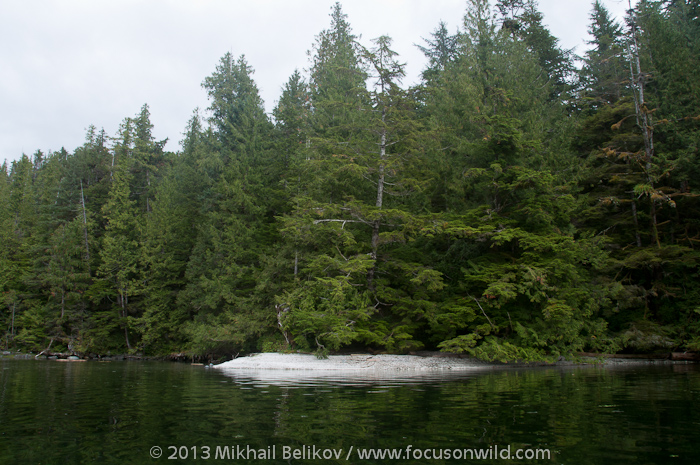After
leisurely loading up my kayak, I had departed at 2:00pm, when the tide
had turned and started ebbing. The area in front of my campsite was
again covered with water, with only a small strip of the sandy beach
visible, quickly disappearing as I was paddling away.

Meyers Passage Campsite at High Tide
A
couple of hours later I was riding through Meyers Narrows -- as the
name suggested, a narrow place in the passage where the tidal current
was especially strong, flowing like a river. It was a fast ride;
however, it did not last: soon, the passage had opened up again, and
the flow became almost unnoticeable. Meanwhile,
an initially gentle front westerly wind had started getting
stronger, building up sizable waves with white caps. After two
hours of struggling against the wind and the waves, with my speed
reduced by a half, I had realized that reaching my intended camp on
Milne Island today was very unlikely. The waves were getting bigger as
I was moving closer to the passage exit: a wide Laredo Sound ahead had
plenty of room for the sea to build up in this strong wind. Even if I
had managed to reach the exit, I would not have been able to move any
further in these conditions. I had checked the chart for protected bays
ahead, preferably with tidal areas that usually indicated a chance for
a flat patch of ground for my tent. Corney Cove, a deep bay with a
stream, about half an hour away, looked promising, and I headed there.
It was already close to 7:00pm when I reached a small islet marking the
cove entrance.






